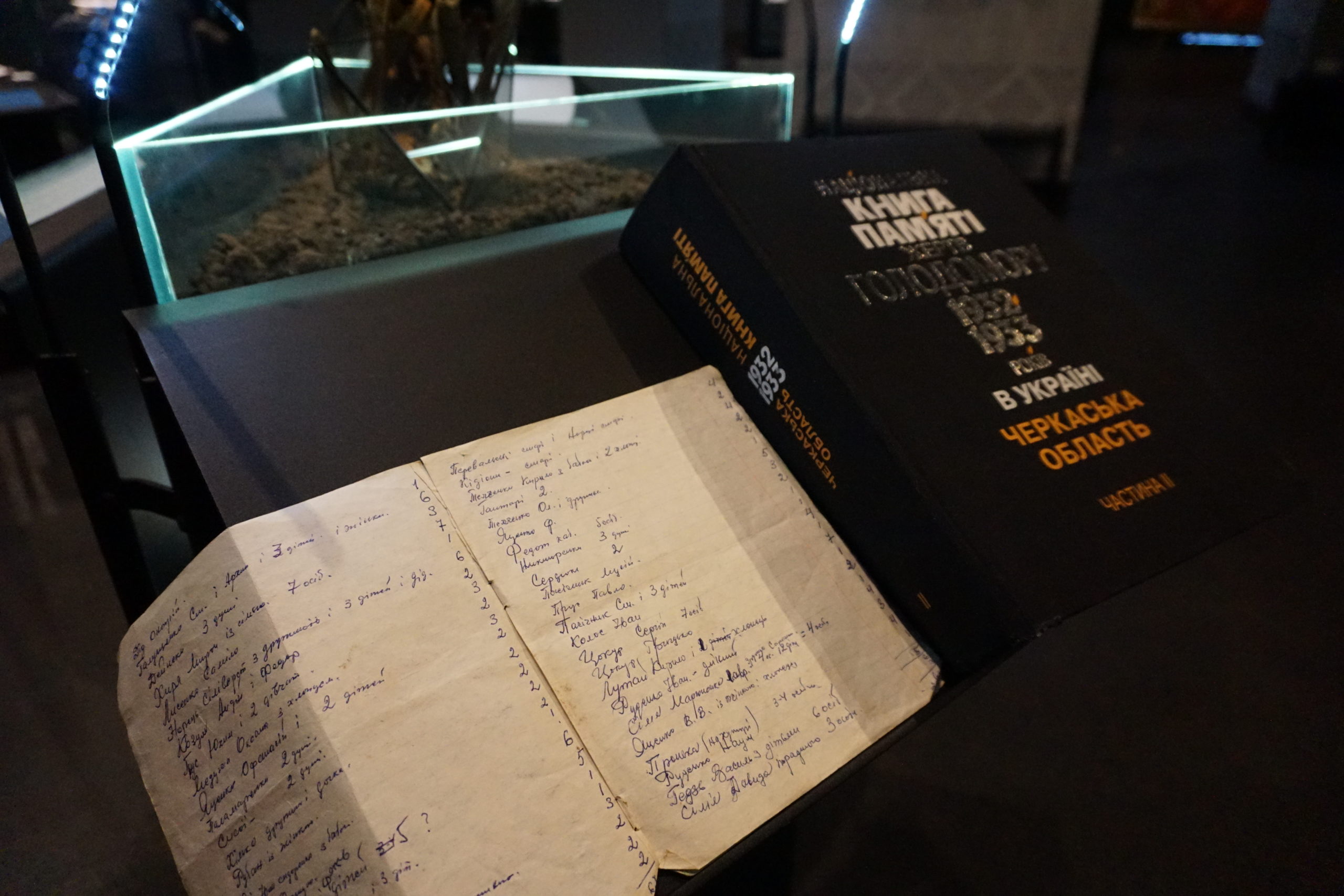The museum received a notebook with the names of people who died during the Holodomor
… Vasyl Pasichnyk with his wife and four children, Savka Medvid with his wife and four children, Vasyl Gedz with his children – six people, Kost Filashenko with his wife and seven children, Shylo’s family – 4-5 people…
This terrible list of Ukrainians killed by famine is from a notebook written by Vasyl Fedorovych Kozulia, born in 1924. During the Holodomor, he lived in the village of Bubniv, Helmiaz district, Poltava region (now Zolotonisky district, Cherkasy region). At the end of the 1950s, the village was flooded due to the construction of the Kremenchuk HPP. So Bubniv residents were relocated to the neighbouring Bubnivska Slobidka village. There, with the declaration of Ukraine’s independence, Vasyl Fedorovych picked up an ordinary school notebook and began to write down the names of fellow villagers who died during the Holodomor. Neighbours helped him create this rural martyrology: during conversations with them, the names of people killed by hunger from Bubniv, who disappeared under water, came to mind.
Vasyl Kozulia passed away in 2004 without even realizing what a valuable legacy he left on a few pages of a thin student notebook. After all, neither Bubniv nor Bubnivska Slobidka is in the all-Ukrainian martyrology – the National Book of Memory of the Holodomor Victims in the Cherkasy Region at all whereas Vasyl Kozulia’s list contains as many as 251 Holodomor victims. Thanks to these records, 90 years later, their names have returned from oblivion and will be entered in the People’s Book of Memory, which is kept by our Museum.
The son of a Holodomor witness, Mykhailo Vasyliovych Kozulia, said that after his father’s death while going through his archive he found these records. After consultation, the family decided to hand the martyrology over to the Holodomor Museum. Sadly, apart from the list of deceased fellow villagers, Vasyl Fedorovych did not leave any other memories. His son says that the family did not talk about the Holodomor – it was a sign of the long-term ban under which this topic was kept in the USSR for decades. Even my grandmother, who survived the Holodomor as an adult, never spoke about it.
For instance, Andrii Kozulia and Fedir Kozulia are on the list of deceased fellow villagers. The latter is Vasyl Fedorovych’s father. But Mr Mykhailo does not know who Andrii is because his relatives did not tell him about it. Obviously, a relative because the record was kept by families. He might be Fedir’s son and the brother of the compiler of the martyrology.
The other day, Vasyl Kozulia’s grandson, Serhii Makarchuk, handed over a notebook with valuable notes to our Museum. We are sincerely grateful to the family for this gift and for preserving the memory of their village.
